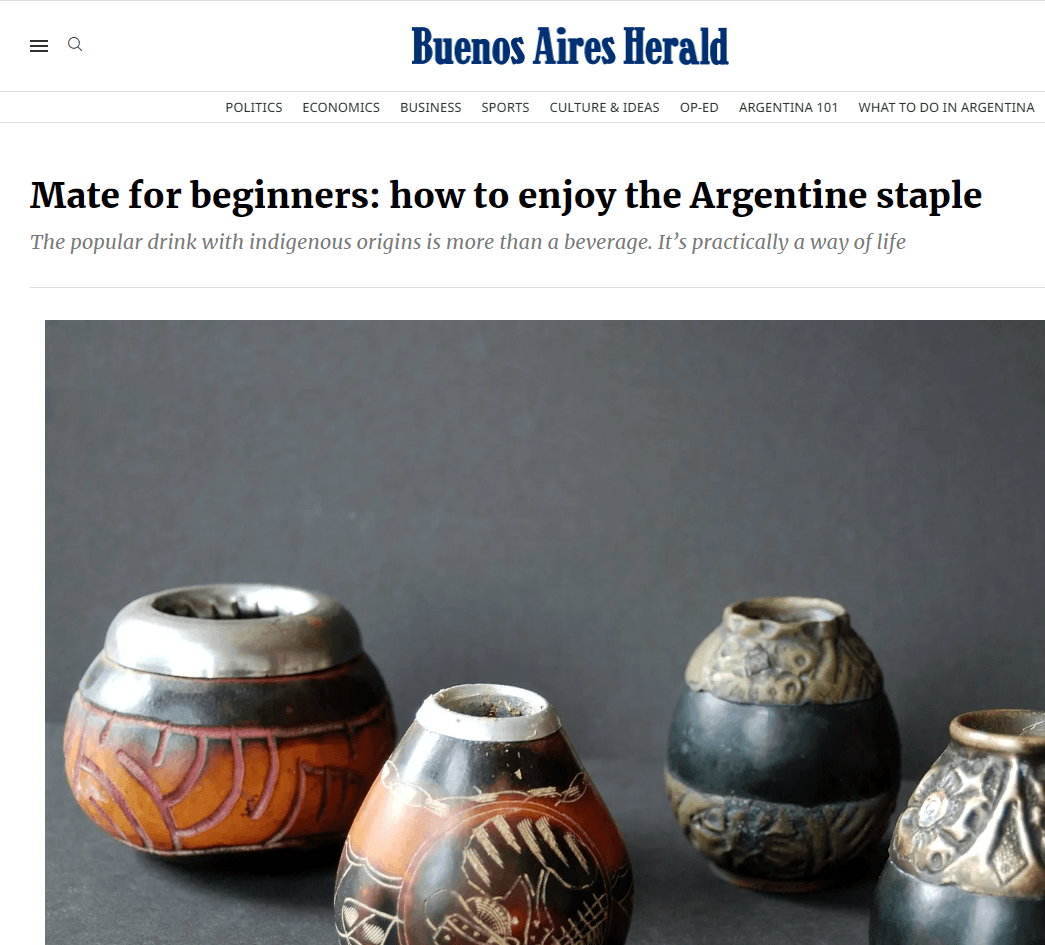Mate for beginners: how to enjoy the Argentine staple
The popular drink with indigenous origins is more than a beverage. It’s practically a way of life

My first encounter with mate happened at work. Martina, my co-worker, pulled out a large thermos, or termo, before filling a small gourd with dessicated green leaves. She then proceeded to pour hot water into the gourd, allowing it to sit as she retrieved a bombilla or straw. A minute or so passed without her so much as stirring the concoction (more on that later).
Martu took a sip and passed the mate to the person next to her. Then it was my turn. I had heard that the drink had an acquired taste and that most foreigners didn’t take to it. But much to my surprise, I found it earthy and enjoyable. My coworkers excitedly filmed my reaction, thrilled that I had savored this Argentine staple.
It wasn’t until I arrived in Buenos Aires that I learned just how essential it was to the culture. In addition to being Argentines’ preferred pick-me-up during a long day at work, mate is a communal ritual that brings people together. If you’re going to drink it in Argentina, however, there are a few things you need to know.
Mate originated with the Guarani, an indigenous people from the lands that are now known as Paraguay.
According to Carina Perticone, an expert on Argentine food and culture, Jesuit priests spread the custom across the region, creating a market for yerba, the herb from which mate is made.
“It’s the drink of Uruguayans, Paraguayans, and Argentines,” Perticone told the Herald. “Yerba mate is also drunk a lot in the south of Brazil.”
Approximately 250 years later, the drink remains an Argentine mainstay. But while its popularity crosses socioeconomic lines, you won’t be able to order one in a cafe like you would a coffee or tea.
“All social classes drink mate, but it is a private drink, enjoyed inside and outside the home,” Perticone added.
Grégoire Fabre, one of the managers at the restaurant Pulpería Quilapán, likened the practice to an Eastern ritual.
“Mate is like the tea ceremony in Japan,” Fabre said. “There are many things you need to know, because if you don’t, well, you cannot do it.”
Without further ado, here are the essential rules of mate, based on conversations with some of its most devoted drinkers.
- Don’t stir the cup. The bombilla is there for one reason and one reason only: to drink the mate. Don’t swirl the leaves around, no matter how tempting it may be, and don’t even think about grabbing the metal straw unless it’s to hold it steady.
- Slurping means you need more water. If you can hear the air whistling through the bombilla, you’ve gone too far. Do not proceed any further; the mate is done. Time to make a new brew.
- Be sure to say gracias. Thanking the mate pourer actually signals that you don’t want anymore.
- Pass the mate to the right person. If gourd needs more water, be sure to give it to the cebador, or server. Otherwise, you’re basically handing the next drinker a mound of wet leaves.
- Don’t blow through the bombilla. I jokingly suggested it might be fun to shoot the wet leaves up into the air, and my coworkers recoiled in horror. Apparently, even Argentine children are aware of this faux pas.
- Don’t hog the mate. As children, we learn that sharing is caring; this concept applies to drinking mate as well. Once you’ve finished your sip, return it to the pourer so that the next person can have a drink.
- Be liberal with the thermos. You don’t want to go overboard if you’re the designated pourer, as too much water can wash out the taste, but you want to make sure there’s mate for everyone in the circle.


